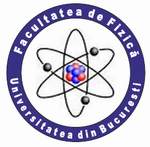| |
 |
UNIVERSITY OF BUCHAREST
FACULTY OF PHYSICS Guest
2025-11-04 15:55 |
 |
|
|
|
Conference: Bucharest University Faculty of Physics 2014 Meeting
Section: Solid State Physics and Materials Science
Title:
Dielectric properties of composites containing Silicon Rubber and Multiwall Carbon Nanotubes decorated with Gold
Authors:
Aida PANTAZI, Stefania PALADE, C. BERBECARU, Daniela DRAGOMAN
Affiliation:
Faculty of Physics, University of Bucharest, Bucharest – Magurele, 077125, Romania.
E-mail
apazaida@yahoo.com
berbecaru2ciceron@yahoo.com
busuioc_stefania@yahoo.com
danieladragoman@yahoo.com
Keywords:
carbon nanotubes, gold decoration, dielectric properties
Abstract:
Red silicon rubber (RS)-based composites with different mass concentration of multi-walled carbon nanotubes decorated with gold nanoparticles (AuMWCNT) were prepared by mixing. With a self-acting RLC bridge connected with a computer for data gathering, the dielectric properties of the RS and RS-AuMWCNT composites were analyzed on wide frequency (300 ÷ 5106 Hz) and temperature (-50 ÷ +150 oC) ranges. In all cases, we found that the dielectric constant reduces at heating, taking reproducible values in heating-cooling cycles. We observed that the permittivity of RS-AuMWCNT composites are dependent on the content of gold-decorated MWCNT. The losses have comparable values for both RS and the composites below room temperature (RT), showing reproducible values in heating-cooling cycles. Above RT, in RS samples the losses become non reproducible, while in RS-AuMWCNT composites the losses have reduced and reproducible values in heating-cooling cycles. The permittivity as well as the losses have only a slight dependence on frequency, decreasing in values for increasing frequencies. The different overall behavior of the dielectric constants in RS and RS-AuMWCNT composites could be caused by a modification of the electric conductivity of the composites with the AuMWCNT concentration, frequency and temperature.
|
|
|
|